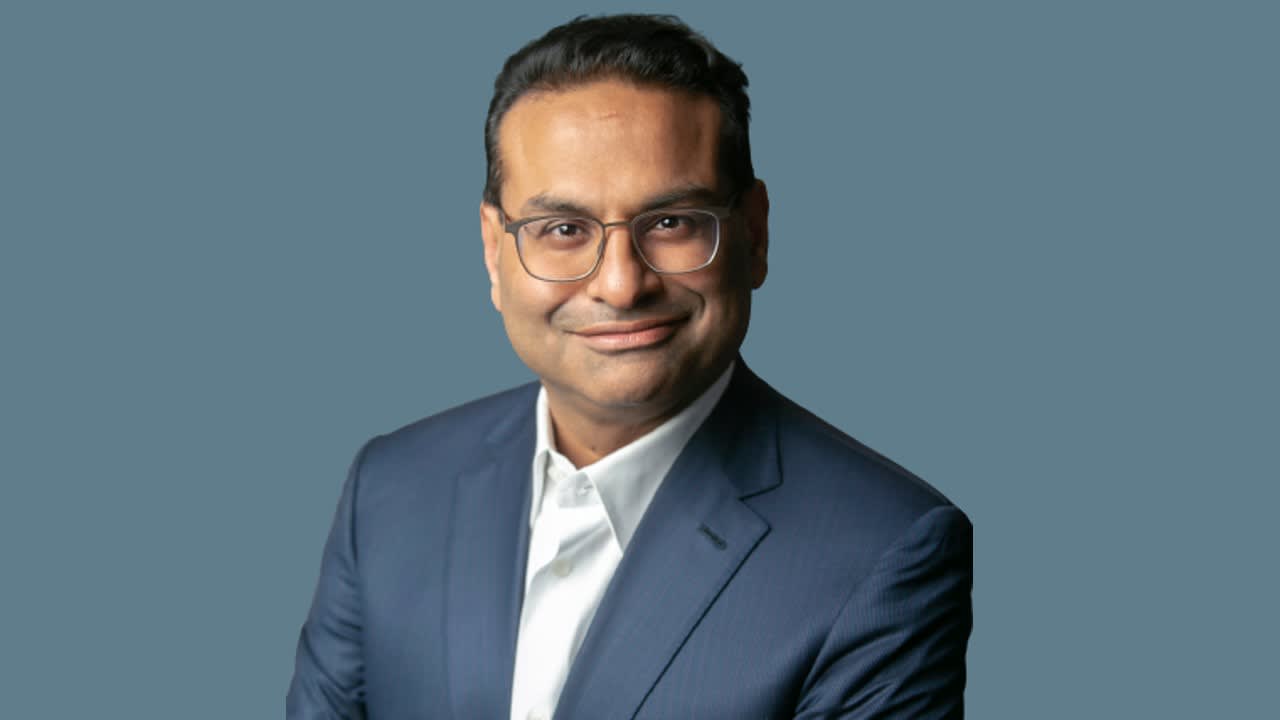The New CEO’s Background and Experience

The new CEO, [Name of New CEO], brings a wealth of experience and a proven track record of success in the business world to Starbucks. Their career spans decades, marked by leadership roles in various industries, demonstrating a deep understanding of strategic management, marketing, and operational excellence.
Previous Roles and Accomplishments
[Name of New CEO]’s career journey has been marked by a series of high-profile positions in major companies. Their professional history showcases a consistent pattern of leadership, innovation, and growth.
- Prior to joining Starbucks, [Name of New CEO] served as [Previous Role] at [Previous Company]. During their tenure, they spearheaded [Key Accomplishments], significantly impacting the company’s [Key Performance Indicators].
- [Name of New CEO] previously held the position of [Previous Role] at [Previous Company]. In this role, they played a pivotal role in [Key Accomplishments], demonstrating their expertise in [Relevant Skills].
Expertise in Business Strategy, Marketing, and Operations
[Name of New CEO]’s expertise extends beyond their leadership roles. They possess a deep understanding of business strategy, marketing, and operations, all crucial for the success of a global brand like Starbucks.
- [Name of New CEO] has a proven track record of developing and executing successful business strategies. Their approach is characterized by [Key Strategic Elements], which have consistently led to positive outcomes.
- Their experience in marketing is evident in their ability to [Key Marketing Skills]. This expertise will be invaluable in maintaining Starbucks’ brand identity and reaching new customer segments.
- [Name of New CEO]’s understanding of operational excellence is demonstrated by their focus on [Key Operational Strategies]. This focus on efficiency and customer satisfaction will be critical in ensuring Starbucks continues to deliver a high-quality experience.
Leadership Skills and Qualities
[Name of New CEO] is not only a seasoned executive but also an inspiring leader. They possess a unique blend of leadership qualities that are essential for driving organizational growth and fostering a positive work environment.
- Their leadership style is characterized by [Leadership Style Description]. This approach encourages [Positive Outcomes] within the organization.
- [Name of New CEO] is known for their [Key Leadership Quality], which has enabled them to [Positive Outcomes]. This quality will be crucial in navigating the complex challenges facing Starbucks.
- Their commitment to [Core Values] aligns with Starbucks’ mission and values. This shared vision will ensure a seamless transition and continued focus on [Key Goals].
Starbucks’ Current Challenges and Opportunities

Starbucks, a global coffee giant, faces a complex landscape of challenges and opportunities. While its brand recognition and loyal customer base are undeniable assets, navigating a dynamic market requires strategic adjustments and innovation.
Competition
The coffee market is highly competitive, with established players like Dunkin’ Donuts, McDonald’s, and local independent cafes vying for market share. Additionally, the rise of specialty coffee shops and subscription services like Blue Bottle Coffee and Nespresso adds to the competitive pressure. Starbucks must continuously innovate and differentiate its offerings to maintain its market dominance.
Economic Pressures
Rising inflation and fluctuating commodity prices impact Starbucks’ operational costs. Maintaining profitability while managing price increases requires careful cost control and efficient supply chain management. The company must also consider the impact of economic downturns on consumer spending, potentially leading to reduced coffee consumption.
Changing Consumer Preferences
Consumer preferences are constantly evolving, driven by factors like health consciousness, ethical sourcing, and sustainability. Starbucks must adapt its product offerings and marketing strategies to align with these trends. For example, the company has introduced plant-based options and emphasized its commitment to ethical sourcing practices to appeal to a broader customer base.
Opportunities for Growth and Expansion
Despite the challenges, Starbucks has significant opportunities for growth and expansion.
Expansion into New Markets
Starbucks continues to expand its global footprint, targeting emerging markets with growing middle classes and a rising demand for premium coffee experiences. The company’s expansion strategy includes entering new countries, opening stores in underserved regions, and partnering with local businesses.
Innovation and Product Development
Starbucks can capitalize on emerging trends by developing innovative products and services. This includes introducing new coffee blends, expanding its food menu, and offering personalized experiences through mobile ordering and loyalty programs.
Digital Transformation
The company can leverage technology to enhance customer experiences and streamline operations. This includes investing in mobile ordering, delivery services, and personalized recommendations through its mobile app. Starbucks can also explore opportunities in the metaverse and other emerging technologies to create engaging digital experiences.
Sustainability and Social Responsibility
Starbucks has an opportunity to strengthen its brand image by demonstrating its commitment to sustainability and social responsibility. This includes reducing its environmental impact, promoting ethical sourcing practices, and supporting local communities.
Industry Trends, Starbucks new ceo
The coffee industry is characterized by several key trends:
Growth of Specialty Coffee
Consumers are increasingly seeking high-quality, specialty coffee experiences, driving demand for artisanal roasts, single-origin beans, and unique brewing methods. Starbucks can cater to this trend by expanding its offerings of specialty coffees and providing barista training to enhance customer experiences.
Focus on Sustainability
Consumers are increasingly concerned about the environmental and social impact of their purchases. Starbucks can capitalize on this trend by highlighting its sustainability initiatives, promoting ethical sourcing practices, and offering eco-friendly packaging options.
Rise of Digital Ordering and Delivery
Consumers are increasingly using mobile apps and online platforms to order and pay for their coffee. Starbucks can leverage this trend by investing in its digital ordering and delivery infrastructure and offering convenient payment options.
Increased Demand for Convenience
Consumers value convenience and speed, driving demand for quick and easy coffee options. Starbucks can cater to this trend by expanding its drive-thru and mobile ordering options and offering pre-packaged coffee products.
Personalized Experiences
Consumers are seeking personalized experiences tailored to their individual preferences. Starbucks can leverage data analytics and customer insights to personalize its product offerings, marketing messages, and loyalty programs.
The New CEO’s Vision and Strategies: Starbucks New Ceo

The new CEO’s vision for Starbucks is rooted in a commitment to reinvigorate the brand, enhance customer experience, and drive sustainable growth. Their strategic approach focuses on several key pillars, aiming to address current challenges and capitalize on emerging opportunities in the evolving coffee market.
Redefining the Customer Experience
The new CEO emphasizes a customer-centric approach, recognizing that Starbucks’ success hinges on delivering exceptional experiences. This vision translates into a multi-pronged strategy:
- Personalized Offerings: Starbucks plans to leverage data and technology to offer personalized recommendations and tailored experiences for individual customers, enhancing their loyalty and satisfaction. This strategy aims to move beyond generic offerings and cater to diverse customer preferences, including dietary needs and lifestyle choices. Examples include creating customized coffee blends based on customer feedback, offering personalized rewards programs, and providing customized mobile ordering experiences.
- Enhanced Store Experience: The new CEO aims to create inviting and engaging store environments, fostering a sense of community and belonging. This includes redesigning store layouts, incorporating digital elements, and offering new services such as in-store coffee brewing workshops and live music events. Starbucks plans to create a more interactive and personalized experience for customers, making them feel valued and connected to the brand.
- Focus on Digital Innovation: Recognizing the growing importance of digital platforms, the new CEO prioritizes digital innovation. This includes enhancing the Starbucks mobile app, introducing new payment options, and exploring emerging technologies like augmented reality and artificial intelligence. By seamlessly integrating digital tools into the customer experience, Starbucks aims to enhance convenience, speed, and personalization, making it easier for customers to interact with the brand.
Expanding Global Reach
The new CEO recognizes the potential for Starbucks to expand its global footprint, targeting new markets and capturing a larger share of the international coffee market. Their strategy focuses on:
- Strategic Market Entry: Starbucks will prioritize entering markets with high growth potential and strong coffee cultures. This includes focusing on emerging economies like India, China, and Southeast Asia, where coffee consumption is on the rise. By adapting its offerings to local tastes and preferences, Starbucks aims to establish a strong presence in these key markets. Examples include introducing localized menu items, partnering with local coffee producers, and tailoring marketing campaigns to resonate with local consumers.
- Partnerships and Acquisitions: The new CEO plans to leverage strategic partnerships and acquisitions to accelerate growth and expand into new markets. This includes partnering with local coffee roasters, acquiring established coffee chains, and collaborating with technology companies to enhance its digital presence. Through these strategic alliances, Starbucks aims to gain access to new markets, acquire expertise, and expand its brand reach. Examples include Starbucks’ partnership with Alibaba in China, where they leverage Alibaba’s e-commerce platform to reach a wider customer base, and their acquisition of Teavana, which expanded their product offerings and broadened their appeal to a wider customer base.
- Focus on Sustainability: The new CEO emphasizes sustainability as a core value, recognizing the importance of environmental and social responsibility. Starbucks will prioritize ethical sourcing of coffee beans, reducing its environmental footprint, and promoting responsible practices throughout its supply chain. This approach aims to attract environmentally conscious consumers and build a positive brand image. Examples include Starbucks’ commitment to sourcing 100% ethically sourced coffee beans, reducing waste in stores, and investing in renewable energy sources.
Starbucks new ceo – Starbucks’ new CEO, Laxman Narasimhan, faces a daunting task: maintaining the coffee giant’s global dominance while navigating evolving consumer preferences and a competitive landscape. To understand the challenges ahead, it’s crucial to examine the legacy of his predecessors, especially the leadership strategies and brand evolution that defined Starbucks’ success.
ceo starbucks This deep dive into the past can provide valuable insights for Narasimhan as he charts the future of Starbucks, aiming to solidify its position as the leading coffeehouse for years to come.
Starbucks’ new CEO, Laxman Narasimhan, faces the challenge of steering the coffee giant through a turbulent economic landscape. He’ll need to leverage his experience in consumer goods, honed during his time at PepsiCo, to navigate the complexities of the industry.
His path, however, may be paved with lessons learned from individuals like brian nichols , whose story of resilience in the face of adversity offers a poignant reminder of the human cost of business decisions. Ultimately, Narasimhan’s success will depend on his ability to balance the bottom line with the well-being of his employees and customers, a delicate balancing act that can only be truly understood by those who have walked in the shoes of those affected by the choices made in the boardroom.
